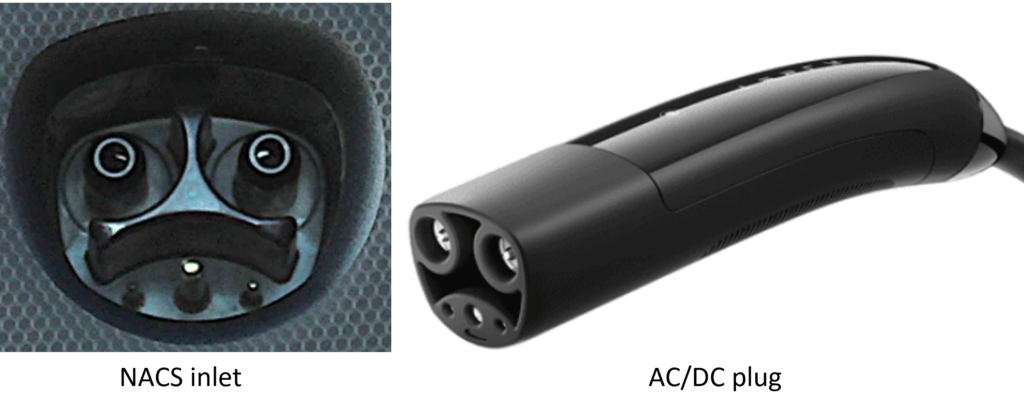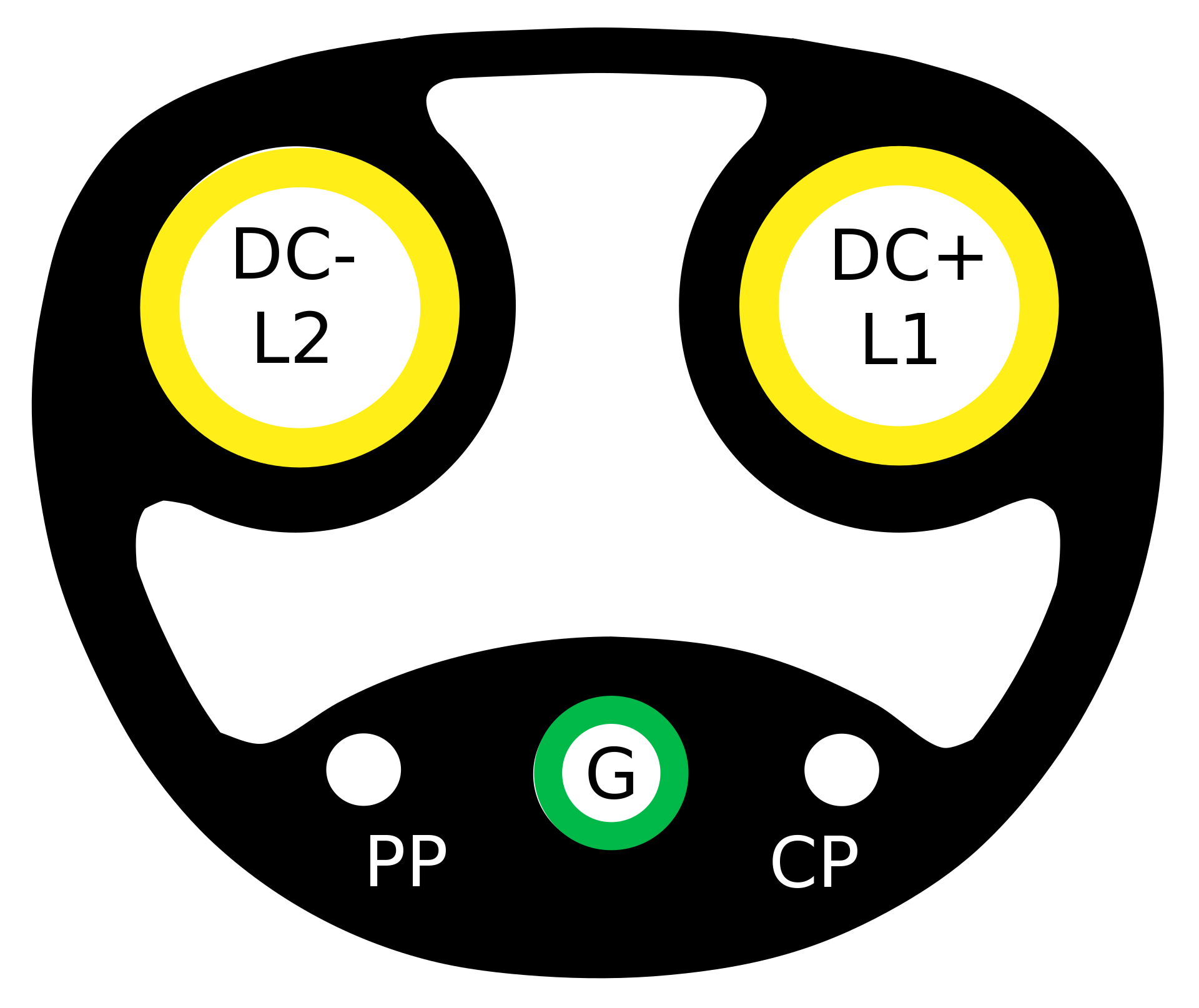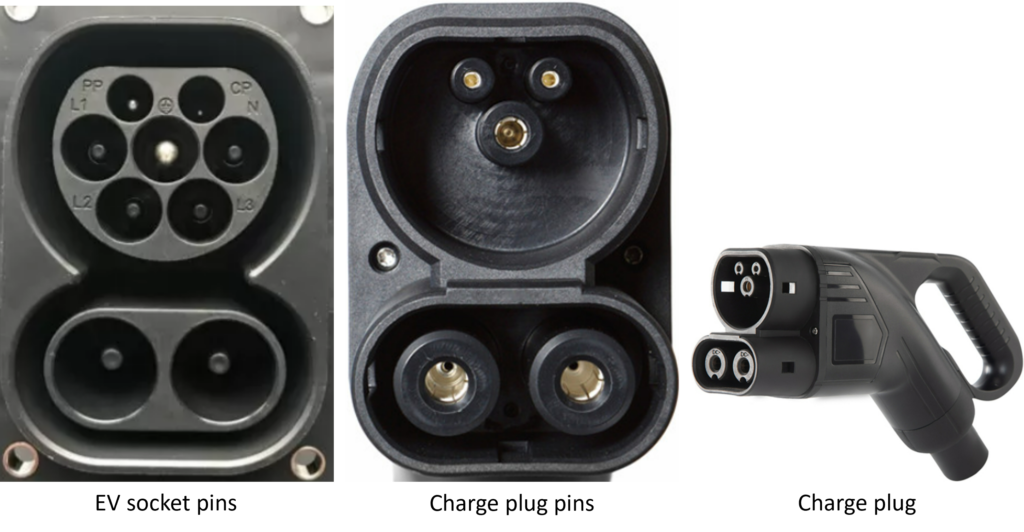CCS1 vs. NACS: A Comprehensive Comparison – Exploring User Perspectives, Technical Aspects, and OEM Challenges
At present, most electric vehicles sold in North America leverage one of two widely adopted DC plug standards for fast charging. Non-Tesla electric vehicles typically come equipped with the Combined Charging System (CCS1), while Tesla’s North America Charging Standard (NACS) provides exclusive access to their proprietary network of Supercharger stations.
Recent announcements from various Original Equipment Manufacturers (OEMs) expressing a shift towards NACS have sparked an intense discussion on the CCS1 vs. NACS debate. In this article, we will delve into the differences between these charging standards, exploring the user perspective, technical intricacies, and the challenges faced by OEMs in embracing Tesla’s NACS.

CCS1:
CCS1, or the North American iteration of the Combined Charging System, extends fast-charging capabilities to the SAE J1772 (Type 1) AC connector. This plug standard facilitates both AC and DC charging through distinct pins within the plug.
In the context of CCS1 charging, AC charging involves utilizing AC power lines (L1, L2), while DC charging relies on DC power lines (DC+, DC-). Signal lines (CP and PP) serve as a shared component for both AC and DC charging processes.


NACS:
Tesla’s North America Charging Standard, referred to as NACS, features a two-pin (power pins) plug that accommodates both AC and DC fast charging using the same pins. In contrast to CCS1, NACS does not emerge as an expanded iteration of a J1772 connector.


Let’s look into the differences between CCS1 and NACS:
Differences from User perspective:
For every user, the primary expectations revolve around ease of use and reliability. Now, let’s delve into the differences between these charging standards from the user’s perspective, focusing on these crucial aspects.
- Ease of Use:
- CCS1: The charge plug for CCS1 is notably heavy and larger in size. Handling and connecting the plug, especially in winter conditions, can be challenging for users.
- NACS: NACS features a smaller and lighter charge plug, enhancing user convenience during the connection process.
- Reliability:
- CCS1: Current user data indicates that CCS1 exhibits lower reliability compared to NACS. Failures, such as payment or interoperability issues, are reported due to the diverse manufacturing sources of charging stations. This results in a reduced number of available charging stations, diminishing user convenience.
- NACS: According to existing user data, NACS stands out for its reliability in comparison to CCS1. Tesla’s ownership of the entire charging ecosystem contributes to fewer operational failures. Consequently, the increased reliability translates to a higher number of functional charging stations, elevating user convenience.
Technical Differences:
| CCS1 | NACS | |
| Charge Port |  |  |
| Supported Charging Types | AC (1-phase) and DC | AC (1-phase) and DC |
| Pins Used During AC Charging | Power Lines: L1 and L2 Signal Lines: PP and CP Reference Line: PE | Power Lines: L1/DC+ and L2/DC- (shared for both AC and DC) Signal Lines: PP and CP Reference Line: PE |
| Pins Used During DC Charging | Power Lines: DC+, DC- Signal Lines: PP and CP Reference Line: PE | Power Lines: L1/DC+ and L2/DC- (shared for both AC and DC) Signal Lines: PP and CP Reference Line: PE |
| Communication | Physical Layer: PLC (Power Line Communication) Protocol: DIN 70121, ISO-15118-2, and ISO-15118-20 (upcoming standard) | Physical Layer: PLC Protocol: DIN 70121 and ISO-15118-2 |
| Locking of Charge Plug | Supports (To avoid the unintentional removal of charge plug during charging process) | Supports (To avoid the unintentional removal of charge plug during charging process) |
| Shutdown from S3 Switch (The S3 switch refers to the button on the charge plug used to mechanically unlock the plug from the charge port.) | Supports | Supports |
| AC Charging Rating | Phase Voltage: Up to 240 V Current: Up to 80 A Power: Up to 19.2 kW | Voltage: Up to 1000 V DC Current: Up to 900 A DC Power: Up to 615 kW DC (Due to the shared configuration of AC and DC power lines, NACS supports higher AC ratings than CCS1.) |
| DC Charging Rating | Voltage: Up to 1000 V Current: Up to 500 A Power: Up to 350 kW (These values are typical, and a few manufacturers may surpass these limits.) | Voltage: Up to 1000 V Current: Up to 900 A Power: Up to 615 kW (These values are typical, and a few manufacturers may surpass these limits.) |
| ASIL (Automotive Safety Integrity Level) | ASIL-A/QM (Direct connection of the battery pack to the AC electrical grid is not possible due to the distinct separation of AC and DC power lines.) | ASIL-D (Given the shared configuration of AC and DC power lines, the system necessitates careful design to prevent any unintended connection of the battery pack to the AC electrical grid. Such a connection may lead to severe failures in both the grid and battery components, potentially culminating in a thermal event.) |
| Design Complexity | Simple (OBC doesn’t need to withstand DC voltages. Lower ASIL needed.) | Complex (OBC needs to withstand input DC voltages. ASIL-D needs to be met.) |
Challenges Faced by OEMs in Embracing NACS:
Adapting to Tesla’s NACS presents noteworthy challenges for OEMs, including:
- Hardware Upgrade: A significant hurdle involves modifying power electronics and HV systems to meet the stringent ASIL-D standards, requiring substantial modifications from existing designs.
- Adapter Implementation: Providing NACS to CCS1 adapters for existing vehicles poses another challenge, especially in ensuring compatibility and convenience for their existing customer base.
- Collaboration with Tesla: Establishing legal agreements and collaborations with Tesla adds a layer of complexity, requiring negotiations and alignment on terms to facilitate a smooth transition to NACS.
- Involvement in NACS Standardization: Active participation in the standardization process of NACS, in conjunction with CharIN (Charging Interface Initiative), presents a collaborative challenge. Working towards standardizing NACS involves navigating industry-wide discussions and contributing to the development of comprehensive standards.
Much like OEMs, Electric Vehicle Supply Equipment (EVSE or Charging Station) manufacturers encounter challenges when adopting NACS. These challenges include making investments in infrastructure updates, collaborating with Tesla, and participating in the standardization process.
Why are OEMs adopting NACS?
Despite the challenges, OEMs are increasingly adopting Tesla’s NACS for several compelling reasons:
- Supercharger Network Access: One of the primary incentives for OEMs is the access to Tesla’s extensive Supercharger network. NACS allows EVs from these OEMs to utilize Tesla’s well-established and widely distributed fast-charging infrastructure.
- Better User Experience: NACS offers a standardized and user-friendly charging experience. Adopting a widely accepted charging standard like NACS contributes to a seamless and consistent experience for EV owners, potentially increasing customer satisfaction.
- Competitive Edge in EV Market: Integrating NACS into OEMs’ electric vehicle models provides a competitive advantage. Access to Tesla’s Supercharger network can be a unique selling point, attracting consumers who prioritize convenient and rapid charging options.
- Reduced Charging Infrastructure Investment: Rather than investing heavily in developing an independent charging infrastructure, OEMs can leverage Tesla’s existing Supercharger network. This can result in significant cost savings and a faster rollout of charging options for their EV customers.
Why has Tesla opened the NACS for all OEMs?
The Tesla Supercharging network is a compelling reason to choose Tesla cars, so why is Tesla giving up this advantage by opening it to everyone? Possible explanations for Tesla’s decision to open the NACS for everyone include:
- Mission Alignment – Driving EV Adoption: In line with Tesla’s mission to accelerate the world’s transition to sustainable energy, the company opens its EV connector design to the world, aiming to encourage widespread adoption of electric vehicles.
- Qualifying for Infrastructure Expansion Incentives: Tesla’s decision could be motivated by the goal of qualifying for a share of the $7.5 billion allocated for EV charging network expansion in the 2021 Bipartisan Infrastructure Law. The opening of 7,500 chargers to non-Tesla vehicles aligns with the law’s conditions, focusing on climate change, healthcare, and tax-related initiatives.
- Adapting to Changing Market Dynamics: The decision to open NACS reflects an acknowledgment of evolving market dynamics. With charging services becoming widely available from diverse providers, Tesla recognizes that maintaining the exclusivity of its Supercharger network may no longer offer a distinct advantage.
- Strategic Revenue Generation from Charging Services: Tesla recognizes the potential for generating revenue by providing charging services. Allowing other electric vehicles to use their charging infrastructure presents an opportunity for additional income for the automaker.
In summary, exploring NACS vs. CCS reveals the intricate dynamics of EV charging standards, addressing user experiences, technical nuances, and OEM challenges. As the automotive landscape evolves, opting for Tesla’s NACS becomes a strategic choice, offering a user-friendly and technologically advanced charging experience, embracing Tesla’s NACS positions consumers and OEMs for a forward-looking and streamlined electric future.
Why is adoption of NACS not feasible for Europe?
The charging infrastructure in Europe uses the CCS2 charging port as standard, known for its 3-phase charging support. In contrast, NACS lacks compatibility with 3-phase charging. Consequently, the adoption of NACS in the European market is not feasible.

EV Charging Explained – Everything you need to know about Electric Vehicle Charging